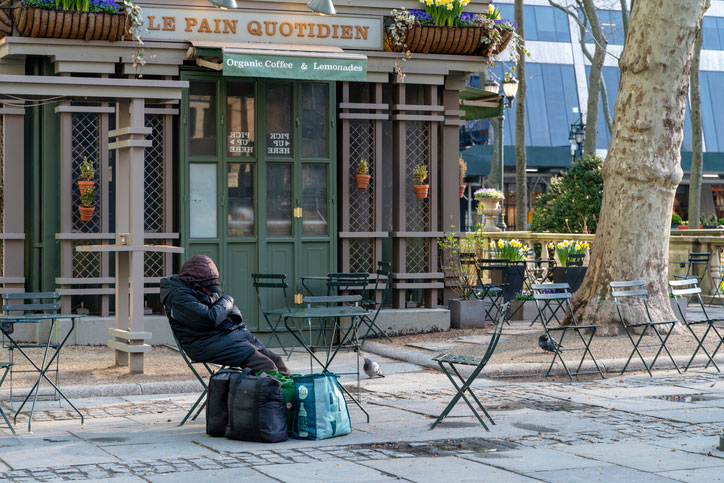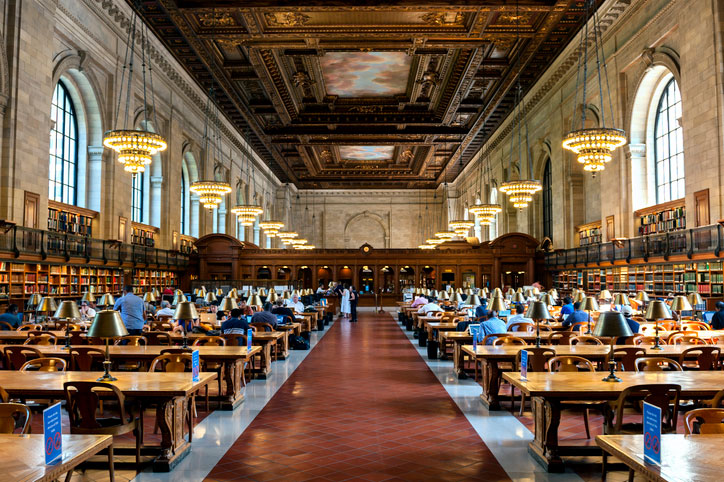Written by Scott Wilson
New York social workers can find themselves operating in many different environments. Walking through Manhattan alleyways looking for overdose victims… driving narrow country roads upstate to check on elderly clients on the outskirts of underserved communities… or sitting in hospital waiting rooms consoling family members. It’s all in a workday for graduates of New York’s social work programs.
But an increasing number of social workers are popping up somewhere you might not expect to find them: the New York Public Library (NYPL) system.
New York’s Public Library System Is the Envy of the World
Although they are definitely public in the traditional sense, New York City’s three main library systems are not actually owned or operated by the city. Instead, they are private non-profit corporations that rely on a combination of public and private funding. Independently managed, they are free in many ways to have a take on public services and social justice that isn’t restricted to the whims of politics.
New York City is served by the New York Public Library, Queens Public Library, and Brooklyn Public Library systems today.
Today’s New York Public Library, Astor, Lenox and Tilden Foundations (as the non-profit is officially called) had its seeds in the will of John Jacob Astor who left a $400,000 endowment on his death in 1848 – equivalent to over $4 million in current day dollars. With additional funding from the great barons of late 18th century capitalism, the three library systems have grown to hold nearly 70 million books between them.
New York’s Most Social Space Inevitably Attracts Society’s Outcasts
Books aren’t the only draw to the vast blocks of ancient stone and dusty stacks, though. As a public space, the libraries have long been refuges, too.
Cool in the summer, warm in the winter, public libraries have long pulled in folks from the streets and neighborhoods without other places to go.
Part of the draw is simply the traditional services of a library in delivering information and entertainment. Unhoused individuals have the same interest in reading, watching movies, or browsing the internet as anyone. Most public libraries offer access to all those things. And in a city where it sometimes seems like the public restroom was never invented, libraries have always been a place that the unhoused could relieve themselves and take care of basic hygiene.

Many New York libraries have also become hotspots for other kinds of in-demand public resources.
- Voter registration
- Language classes
- Technology classes
- Career coaching and resume writing support
You can even attend a concert or attend a talk on any topic under the sun.
But even as the ultimate public safe space, libraries weren’t built as a venue for social services.
Libraries are trusted as safe spaces by many vulnerable populations. Students of all ages are already familiar with them; adults recognize them as quiet places where helpful people work, security is maintained, and space is respected. Just as important, they are the information repositories of society. When a question needs to be answered, people know that answer is likely to be found in a library somewhere.
So when New Yorkers have issues that fall into the gaps of the human services system, the public library is often where they end up.
Yet libraries weren’t originally designed to accommodate everything they are being asked to do today. And even in New York, where librarians have seen it all, their training doesn’t include the interdisciplinary expertise to handle the needs of every person walking in the door.
Social Workers Gravitate to Where New Yorkers Need Them
All of this has led libraries across the country to start incorporating dedicated social workers into their systems.
According to the NASW-NYC Currents Spring/Summer Newsletter in 2024, there are 60 full-time library social work positions staffed across the United States today. More than 150 libraries have internship positions for social work students. And many others have brought in part-time social workers to help offer important services to patrons and the community.
All three of New York’s public library systems have joined the trend to kickstart dedicated social work connections for their users. Social workers with the Brooklyn Public Library offer support referrals in such vital services as:
- Food
- Housing
- Employment
- Health Insurance
- Mental Health Counseling
Social workers with Queens Public Library deliver case management services as well as referrals from four different locations.
And, in a partnership that is of particular interest to social work students in the Five Boroughs, NYPL actually teams up with accredited NYC schools of social work to match clients up with students, giving them a chance to hone their craft and gain vital field experience assisting individuals and families in need.
What Is It Like to Be a Library Social Worker in New York?

Libraries are a great spot to get social work students engaged with both the profession and the communities they will serve. They encounter a huge cross-section of the vulnerable individuals in society, from young to old, and from every corner of the socioeconomic spectrum.
Unhoused individuals in libraries are often those from the very fringes of the system. They may be sanctioned for behavioral reasons and unable to use the city shelter system or have had negative experiences with official shelters in the past.
Social workers expand library services beyond just access to information by offering real action to get patrons the assistance they need.
The questions patrons come in with span the scope of social work services in New York. They may need information about dealing with ACS, the Administration for Children’s Services, or connection to a free legal aid for assistance with outstanding warrants, or help filling out tax forms. Something as basic as getting a prescription filled can be a challenge; librarians run into limits with such queries, but social workers are specifically trained in helping to get these requests handled.
Social work students perform the difficult but very real work of attempting to connect these individuals with services. They also feel the intense frustration that comes with coming up empty on those services. For this reason, library internships are often a good setting for exploring the connections between mezzo and macro level social work, and an opportunity to think outside the box in exploring big ideas and finding workable policy solutions.
Recent Pressures from a High Number of Recent Immigrants Are Landing on New York Libraries
This has become a particularly dire need during the recent influx of immigrants to New York. The East Kingsbridge Road branch of NYPL saw lines around the block filled with people applying there for IDNYC cards, a first step to official identification that gets access to health and wellness centers across the city. Other branches have had to bump up their English Language Learning classes as demand has skyrocketed.
NYPL also has the resources that help immigrants prepare for naturalization interviews and to pass the citizenship test—all for free.
And the libraries host access to ActionNYC legal screenings and free representation, as well as offering referrals to other types of legal and assistance services.
Libraries are just one example of a place where social workers in New York can put themselves in a position where the most vulnerable populations can be found. While social work is becoming a more common part of library services, though, libraries themselves aren’t likely to transform into the human services center of the future. They still have a primary role to play as places of knowledge and centers of learning.
Yet even a single social worker can extend the value of a humble public library in the public sphere. In New York, that’s changing the lives of new residents and old… and helping to train the next generation of social workers to meet their needs.

